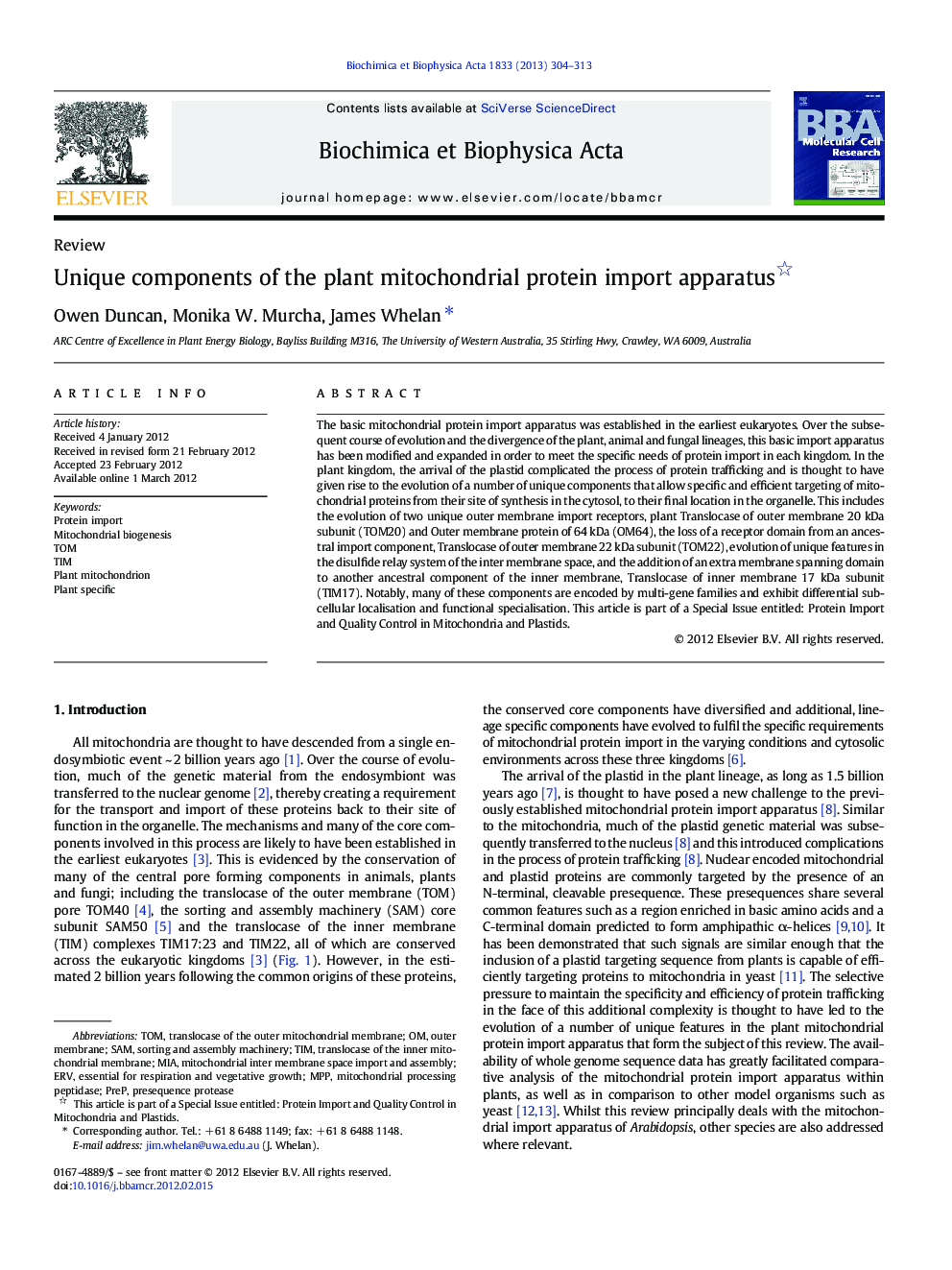| Article ID | Journal | Published Year | Pages | File Type |
|---|---|---|---|---|
| 10802702 | Biochimica et Biophysica Acta (BBA) - Molecular Cell Research | 2013 | 10 Pages |
Abstract
The basic mitochondrial protein import apparatus was established in the earliest eukaryotes. Over the subsequent course of evolution and the divergence of the plant, animal and fungal lineages, this basic import apparatus has been modified and expanded in order to meet the specific needs of protein import in each kingdom. In the plant kingdom, the arrival of the plastid complicated the process of protein trafficking and is thought to have given rise to the evolution of a number of unique components that allow specific and efficient targeting of mitochondrial proteins from their site of synthesis in the cytosol, to their final location in the organelle. This includes the evolution of two unique outer membrane import receptors, plant Translocase of outer membrane 20 kDa subunit (TOM20) and Outer membrane protein of 64 kDa (OM64), the loss of a receptor domain from an ancestral import component, Translocase of outer membrane 22 kDa subunit (TOM22), evolution of unique features in the disulfide relay system of the inter membrane space, and the addition of an extra membrane spanning domain to another ancestral component of the inner membrane, Translocase of inner membrane 17 kDa subunit (TIM17). Notably, many of these components are encoded by multi-gene families and exhibit differential sub-cellular localisation and functional specialisation. This article is part of a Special Issue entitled: Protein Import and Quality Control in Mitochondria and Plastids.
Keywords
SAMMPPMIAToMPrEPTIMessential for respiration and vegetative growthERVtranslocase of the outer mitochondrial membranetranslocase of the inner mitochondrial membraneMitochondrial biogenesisOuter membranesorting and assembly machineryPlant mitochondrionProtein importmitochondrial processing peptidasepresequence protease
Related Topics
Life Sciences
Biochemistry, Genetics and Molecular Biology
Biochemistry
Authors
Owen Duncan, Monika W. Murcha, James Whelan,
